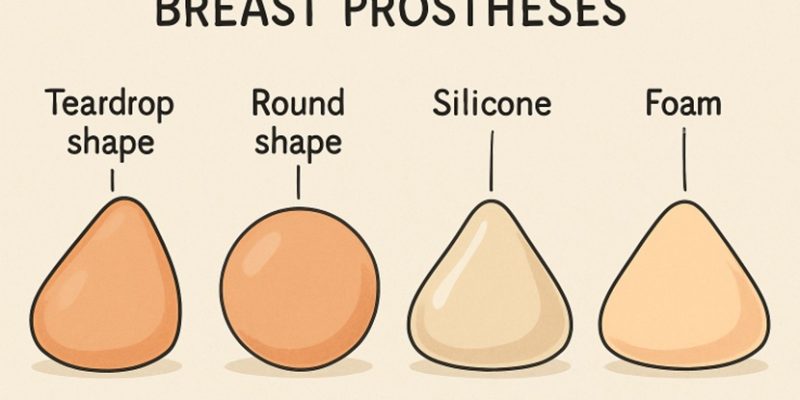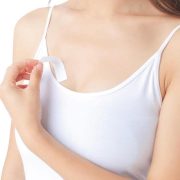Key Takeaways
- There are multiple types, shapes, and materials for breast prostheses, each designed to accommodate individual needs after breast surgery.
- Custom options, such as customizable silicone breastplates, can offer a more tailored and natural appearance.
- Professional fitting and ongoing care are essential for long-term comfort and satisfaction.
Introduction
Choosing the right breast prosthesis after surgery is crucial for regaining confidence and comfort. With numerous materials, styles, and fitting options, it can be overwhelming. Customizable silicone breast plates are popular for their adaptability and natural look, making them a more comfortable option. Understanding your options and aligning them with your lifestyle is essential for finding a prosthesis that supports your well-being and daily activities. Factors like fit, skin sensitivity, activity needs, and insurance concerns must be considered. Having the right knowledge helps you select a form that feels right and restores balance.
Understanding Breast Prostheses
A breast prosthesis is an artificial breast form designed to mimic the weight, appearance, and feel of a natural breast. Women commonly use it after mastectomy or lumpectomy to restore symmetry and self-assurance in clothing and daily life. The type of prosthesis depends on factors like surgical outcomes, skin sensitivity, and desired appearance. There are various options, from off-the-shelf pieces to advanced custom-molded plates. The prosthesis aims to achieve balance after surgery, prevent discomfort, and integrate modern options like silicone breast plates, reflecting current prosthetic design trends.
Types of Breast Prostheses
Breast prostheses are available in various types, including full or standard prostheses, partial or shaped prostheses, shell prostheses, stick-on prostheses, and custom-made prostheses. Full prostheses replace the entire breast and are suitable after mastectomy. Partial prostheses are designed for women who have had lumpectomies or partial mastectomies. Shell prostheses provide a soft external shell to even out differences in breast size. Stick-on prostheses adhere securely to the chest with medical-grade adhesives, while custom-made prostheses use 3D imaging for a bespoke fit. Custom-molded prostheses offer enhanced realism and personalization, providing aesthetic benefits and improved comfort over longer wear periods.
Materials and Weight Considerations
Breast prosthesis material is crucial for comfort and utility. Primary options include silicone, foam, fiberfill, and polypropylene beads. Silicone mimics natural breast tissue, providing a realistic appearance, but it can be heavier in warm climates. Foam or fiberfill is lightweight and ideal for postsurgical use, physical activity, or water-based activities. Polypropylene beads adapt to body curvature and encourage breathability, making them suitable for warmer seasons or active lifestyles. Choosing the right weight and material can minimize discomfort, prevent strain on shoulders and chest, and ensure discreet wear.
Shapes and Styles of Breast Prostheses
The prosthesis’s shape significantly influences its appearance and functionality. There are three main types: symmetrical, teardrop-shaped, and asymmetrical. Symmetrical forms are oval or triangle-shaped and comfortable for most figures. Teardrop-shaped prostheses mimic the natural breast’s fullness, which is ideal for those with similar contours. Asymmetrical types feature extensions for those with extensive surgeries. A prosthesis shape that mirrors your natural look boosts self-confidence and provides a seamless appearance under clothing.
The Importance of Professional Fitting
Professional fitting services can be transformative for new prosthesis wearers. Certified fitters have the expertise and tools to measure accurately and recommend the ideal size, shape, and material based on your surgery, lifestyle, and personal preferences. They can also address unique challenges such as lymphedema, scarring, and sensitive skin, ensuring ongoing comfort and a flattering silhouette.
Consulting a professional fitter also means you’ll get thorough instruction on prosthesis care—critical knowledge that supports a longer product lifespan and continued satisfaction. Many major hospital centers and specialty boutiques offer fitting consultations, making it worthwhile to seek out these services after surgery.
Care and Maintenance
Correct care preserves the fit and function of your prosthesis, protecting your investment and ensuring hygiene:
- Wash with lukewarm water and mild, non-oily soap—never harsh detergents or bleaches.
- Pat dry gently and avoid exposing the form to high heat, like direct sunlight or hot appliances.
- Store in a molded case to retain its shape and prevent accidental punctures or tears when not in use.
Consistent, gentle maintenance routines can extend your prosthesis’s lifespan, providing lasting comfort and value. The Mayo Clinic also recommends regular inspections for wear or damage, especially for long-term users.
Insurance and Cost Considerations
Many insurance providers offer coverage for standard and custom breast prostheses, as well as specialized bras. It’s important to verify your plan’s benefits and the required documentation before purchasing—some insurers stipulate medical prescriptions or proof of surgical necessity. Exploring affordable options through insurance can ease the financial component of transitioning to a prosthesis, so communicating with your health care provider and insurer early in the process is highly recommended.
Conclusion
Finding the ideal breast prosthesis is a highly personal journey that touches on physical, practical, and emotional factors. With advances like customizable silicone breastplates, better material science, and expert fitting professionals, today’s choices offer more realism and comfort than ever before. Invest time in exploring these options and consult qualified fitters to ensure your selected prosthesis supports your lifestyle, confidence, and ongoing well-being.













Comments